| 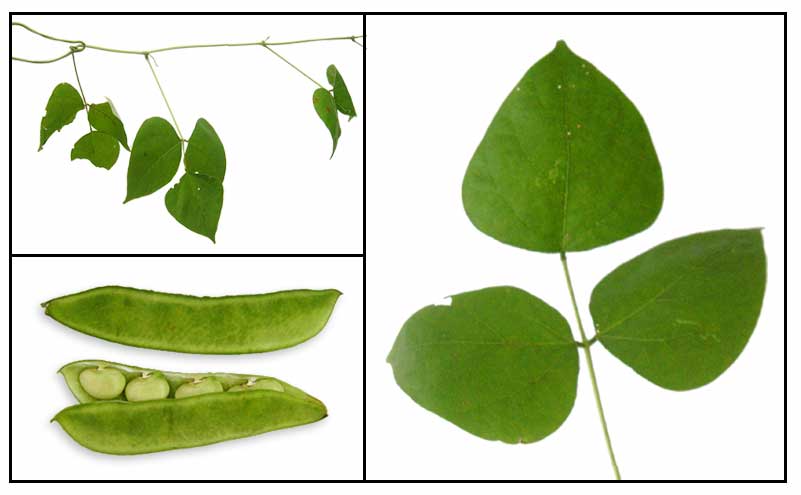 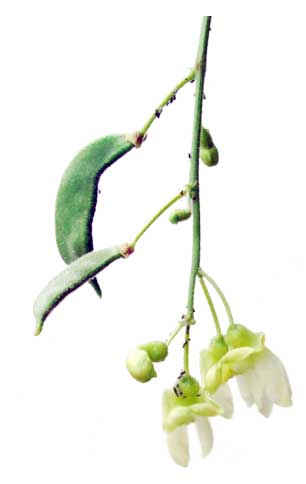
Gen info
- Phaseolus is a genus of herbaceous to woody annual and perennial vines in the family Fabaceae containing about 70 species. It is one of the most economically important legume genera. (26)
- Etymology: The genus name Phaseolus, introduced by Linnaeus in 1753, derives from the Latin phaseolus, a diminutive of phaselus. which is borrowed from Greek 'cowpea'. (26)
-
During the Spanish Viceroyalty of Peru, lima beans were exported to the Americas and Europe in boxes labeled with place of origin "Lima, Peru", and the beans were named such. Despite the origin of the name, the bean name is generally pronounced different from the Peruvian capital. (25)
- The Andes domestication of Phaseolus lunatus took place around 2000 BC and produced the large seeded variety (limata type); the second type took place in Mesoamerica ca 800 AD, which produced the small-seeded variety (Sieva-type). (25)
Botany
Patani is a climbing, slender, annual, smooth,
sparingly hairy, herbaceous vine reaching a length of 4 or more meters. Leaves
are thin, compound with three leaflets which are ovate, 6 to 12 centimeters long, rounded
at the base and pointed at the tip. Flowers are greenish or pale yellow,
about 10 to 13 millimeters long, on axillary and solitary racemes 8 to 20 centimeters long.
Pods are oblong and slightly curved, 6 to 12 centimeters long, about 2 centimeters wide,
containing 1 to 4 large, variously colored, white, greenish or purplish seeds.
Distribution
- Thoroughly naturalized.
- A wild variety is common in thickets at low and medium altitudes, ascending to 2,000 meters.
-
Extensively cultivated for its edible
seeds.
- Introduced from tropical America.
-
Now pantropic.
 Constituents Constituents
• The seeds of the wild lima
variety, especially the dark purple beans, yield phaseolunatin, C10H17O6N, a cyanogenetic glucoside, in dangerous
amounts; very minimal in the cultivated variety.
• The leaves and stems also contain phaseolunatin, but not in
the roots.
• Study of hydrocyanic acid content of patani varieties grown in Philippines showed: Wild variety, 0.060-0.240; semi-wild, 0.049-0.055; cultivated variety, 0.030; green beans, wild variety, 0.030; and green beans, cultivated, 0.011 percent HCN.
• High in carbohydrate and protein, fair in iron, and deficient
in calcium.
• In isolates, protein content was found to be 71%.
• Contains a number of anti-nutrients. Raw lima beans contain cyanide, trypsin-inhibitor, lectin, phytin and tannin. Autoclaving removes all of the antinutrients except tannin. Soaking removes trypsin inhibitors and lectin.
• Contains linamarin, a cyanogenic glucoside; safe when cooked.
• Comparative nutrient analysis of wild and cultivated seeds yielded: protein 22.84% vs 20.05%, ash 3.42% vs 2.91%, crude fiber 5.48% vs 4.54%, crude lipid 2.63% vs 2.55%, carbohydrates (NFE) 65.63% vs 69.95%, energy 1570.60 vs 1599.14 kJ100g DM. (see study below) (18)
• Nutrient analysis of lima bean yielded per 1 cup/156g: calories 176 Kcal, calories from fat 12.06 Kcal; (Proximates) water 109.57g, energy 176 Kcal, energy 738 kJ, protein 10.67g, total fat (lipid) 1.34g, ash 2.95g, carbohydrate 31.47g, total dietary fiber 7.6g, total sugars 2.31g; (Minerals) manganese 1.895mg, iron 4.9 mg, copper 0.496mg, phosphorus 212mg, magnesium 90mg, potassium 729mg, zinc 1.22mg, calcium 53mg, selenium 2.8mg, sodium 12mg; (Vitamins) vitamin C (ascorbic acid) 36.5mg, vitamin B1 (thiamin) 0.339mg, vitamin B6 (pyridoxine) 0.318, vitamin B3 (niacin) 2.999mg, vitamin B9 (folate) 53µg, vitamin B2 (riboflavin) 0.161mg, choline 62.4mg, vitamin B5 (pantothenic acid) 0.385mg, vitamin K (phylloquinone) 8.7 µg, vitamin E (alpha-tocopherol) 0.5mg, vitamin A 16 µg, beta-carotene 197 µg.(19) (20)
•
Nutrient analysis for amino acids yielded: isoleucine, tryptophan, valine, histidine, threonine, leucine, lysine, phenylalanine, methionine, cystine, tyrosine, arginine, alanine, aspartic acid, glutamic acid, glycine, proline, and serine. (19) (20)
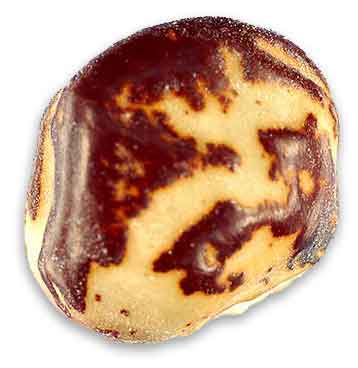 Properties Properties
• The seeds of the wild lima
variety may be poisonous.
• Studies have suggested hypolipidemic, hypoglycemic, antibacterial, antifungal, antiproliferative, estrogenic,
hepatoprotective, nephroprotective, antihypertensive, herbicidal, antioxidant, anti-inflammatory, hemagglutinating properties.
Uses
Edibility / Nutritional
• Edible: Leaves, seeds, seedpods.
• Usually eaten as a green bean or before it becomes dry and hard.
• The cultivated patani is a popular vegetable; the white variety
considered the best. The colored variety should be boiled in several
changes of water.
• Seeds are best soaked for about 12 hours before cooking.
• Dried seeds can be ground into a powder and used as thickener in soups or mixed with cereal flours when making bread.
• Leaves are edible, cooked, although with a bitter taste.
• Japanese cook dry seeds as "nimame" -- boiled bean sweetened with sugar.
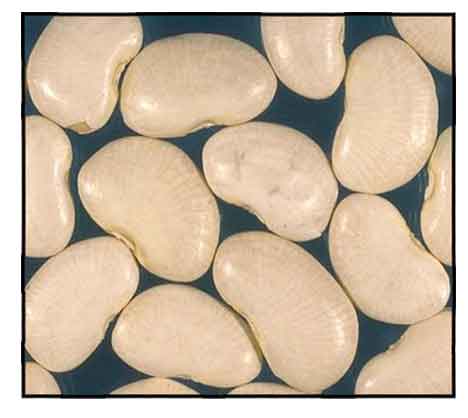 Folkloric Folkloric
• In the Guianas, bark rasped is cold water infusion used to treat fevers.
(23)
• In traditional Asian medicine, considered astringent; used in diet as treatment of fever. Seeds are powdered and rubbed tinto small cuts on tumors and abscesses to promote suppuration. Leaf juice, mixed with coconut oil or castor oil, given to children to improve strength, to treat fever, and as emetic.
(27)
• In Senegal and the DR of Congo, juice from leaves used in nasal installations against headache and as ear drops.
Others
• Agroforestry: Grown as sole cropping, intercropping, or as cover crop and for green manure, fodder, fodder and for soil improvement. (27)
Toxicity concerns
•
Like many beans, raw lima beans are toxic, due to phytohemagglutinin content. It must be boiled for at least 10 minutes. Canned beans are pre-cooked and can be eaten without boiling. (25)
•
A form of patani with dark-colored seeds is common in thickets in parts of the Philippines. Seeds are edible, but sometimes may be poisonous, and deaths have been reported.
• A wild lima bean or dark-colored variety may be poisonous with dangerous
amounts of phaseolunatin. The cultivated bean is free or contains very small quantities of this glucoside.
• Lima beans can contain anti-nutrients such as phytic acids, saponin, oxalate, tannin, and trypsin inhibitors, which may inhibit the absorption of nutrients in animals and can cause damage to some organs. Besides boiling, roasting, pressure cooking, soaking, and germination can reduce the antinutrients significantly. (25)
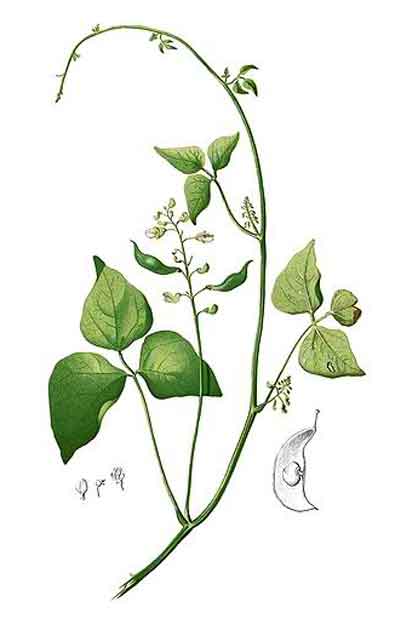 Studies Studies
• Hypolipidemic:
In dietary-induced hypercholesterolemic rats, there was a significant
reduction of serum lipids in rats fed the lima beans Legume Diet and
Saponin diet which was attributed to the saponin in the legume. The results
suggest the consumption of lima beans can be recommended to lower cholesterol
and promote cardiovascular health. (1)
• Lunatusin / Antibacterial / Antifungal
/ Antiproliferative: Lunatusin, an anti-fungal peptide
was purified from the seeds of Chinese lima bean. It exhibited anti-fungal
and antibacterial activities, anti-proliferative activity in a breast
cancer line among other effects. (3)
• Estrogen-like Activity:
Study suggested molecular mechanisms and different pathways in the estrogen-like
activities of the ethanol extracts of Adzuki bean and Lima bean. (4)
• Trypsin Inhibitors / Reverse Transcriptase Inhibition:
Study showed the trypsin inhibitor from P lunatus was able to inhibit HIV-1 reverse-transcriptase. (5)
• Lectin:
Lectin-related polypeptides are a class of defense proteins found in the seeds of Phaseolus species. Such proteins and their genes have been characterized in lima bean. (7)
• Toxicity / Raw Lima Beans:
Raw lima beans in a feeding broiler starter diet trial hindered growth in chicks and produced serious histopathological changes in the liver, kidneys, pancreas, spleen and lungs. (8)
• Hypoglycemic / Hypolipidemic / Hepato-Nephroprotective:
Study evaluated the effect of heat-treated lima beans on serum glucose and some biochemical parameters in alloxan-induced diabetic rats. Results showed heat-treated lima beans has a significant hypoglycemic and hypolipidemic effects in diabetic rats. In addition, study showed a protective effect on liver and kidney functions. (10)
• Hypoglycemic / Alpha-Amylase Inhibiting Activity:
The common white bean (Phaseolus vulgaris) produces an alpha-amylase inhibitor. A specific proprietary product, Phase 2 Carb Controller, has the potential to induce weight loss and reduce sugar spikes in blood sugar caused by carbohydrates through it alpha-amylase inhibiting activity. (11)
• Weight Loss / Alpha-Amylase Inhibiting Activity / Carbohydrate Blockers:
The mechanism of weight loss from taking bean extract was attributed to alpha-amylase inhibiting activity. In vitro study of the extract has shown inhibition of alpha-amylase, promoting weight loss by interfering with digestion of complex carbohydrates to simple absorbable sugars, with potential reduction of carbohydrate-derived calories. (12)
• Lima Bean Protein Hydolysates / Antihypertensive / ACE-1 Inhibitory Activity:
Lima bean protein hydrolysates prepared with Alcalase or pepsin-pancreatin are a potential ingredient in the production of physiologically functional foods with antihypertensive activity. In the study, pepsin-pancreatin hydrolysates exhibited the highest ACE inhibitory activity. (13)
• Ointment Against Dog Mange: A lima bean ointment formulation was shown to be effective against Sarcoptes and Demodex species of mites in dogs. (14)
• Ointment Against Dog Mange: Study of a dietary supplement containing 445 mg. of Phaseolus vulgaris extract derived from white kidney bean produced significant decrements of body weight and suggest decrements in fat mass with maintained lean body mass. (15)
• Anti-Nutrient Components
and Metabolites / Health Implications: Phaseolus vulgaris provides inexpensive food rich macronutrients such as starch and protein, important micronutrients such as iron, plus a number of other bioactive compounds (phytates, polyphenols, tannins, raffinosaccharides, lectins, protease, and a-amylase inhibitors, saponins, etc.) with their potential antioxidant, antitumor or phytoestrogenic activity. In a study of 10 bean populations, "Poverello di Rotonda AF"showed an accumulation of remarkable levels of quercetin (24.2 µg/g), genistein (21.6 µg/g), soysapogenin B (433 µg/g) and oleanolic acid (11.9 µg/g). "Tabacchino" yielded high amounts of iron (131 µg/g) and three health-promoting components: kaempferol, oleanolic acid and condensed tannins. (16)
• Herbicidal Potential: Study evaluated the photosynthetic effects of leaves extracts from I. cairica on Parthenium hysterphus L. Results showed the extract adversely affected the chlorophyll a and b, total chlorophyll and carotenoid contents of Parthenium as the duration increased. Results suggest potential as an herbicide to control the noxious weed P. hysterophorus. (17)
• Comparative Nutrient Analysis / Wild and Cultivated Lima Beans: Study compared wild lima beans to cultivated seeds in proximate composition, seed protein fractions, amino acid profiles, mineral composition, in vitro protein digestibility and anti-nutritional factors. The wild variety showed more protein, ash, crude fiber and crude lipid, less carbohydrate and energy level than cultivated seeds. Wild seeds showed to be a rich source of potassium, calcium, magnesium, and phosphorus, higher L-DOPA content, with less free phenolics, tannins, less trypsin inhibitor activity. (18)
• Effect of Essential Oils on Quality of Lima Bean Seeds: Study evaluated the effectiveness of essential oils of copaiba, clove, and basil in reducing the incidence of fungi associated with lima bean seeds and their effect on physiological quality. Results showed the essential oils of copaiba and basil significantly reduced the percentage of fungi incidence. Clove reduced the physiological quality of lima bean seeds. (21)
•
Antioxidant: Study evaluated selected underutilized bean seeds (Cajanus cajan, Sphenostylis stenocarpa, Phaseolus lunatus 1, and Phaseolus lunatus 2) for nutritional potential and antioxidant capacity. The antioxidant activity of P. lunatus beans (1 and 2) was found to be significantly higher (p<0.001) than other varieties, with mean AA of 1298.7 and 1056.0 mg GAE/100g, respectively. (22)
• Total Phenolics / Antioxidant: Study sought to characterize for the first time polyphenols and DPPH antioxidant activity in commonly cultivated accessions of P. lunatus. Lima beans accession with the highest polyphenols and antioxidant activity were those of colored seeds. The polyphenols correlated with antioxidant activity with possible benefit to human health. It has potential for use as functional food crop and/or new ingredient in gastronomy. (24)
• Disintegrant Efficiency of Lima Bean Starch: Study evaluated the disintegrant efficiency of starch obtained from lima bean (Phaseolus lunatus) using measures of organoleptic properties, microscopy and reaction with iodine solution, bulk and tapped density, Hausner's ratio and Carr's compressibility index. Results showed P. lunatus starch can be used as a disintegrant in the production of tablets with pharmaceutical quality and at optimum concentration can be used as suitable substitute for maize starch as disintegrant in the formulation of paracetamol tablets. (29)
• Anti-Inflammatory: Study evaluated the antioxidant and anti-inflammatory activity of isolated protein concentrates. Antioxidant activity was evaluated by TBARS method and anti-inflammatory activity was evaluated by denatured protein method. Protein concentrates at pH 5.0 and 6.0 showed higher antioxidant activity at 1 mg/mL concentration. Higher anti-inflammatory activity was observed at 1000 mcg/mL concentration for protein concentrates at pH 3.0 and pH 5.0.
(30)
• Hemagglutinating Effect / Seed: Study evaluated crude extract of lima bean (Phaseolus lunatus) seeds for potential in agglutinating red blood cells and specifically what type of antigen will react to it. Four treatments (T1, T2, T3, T4) were made from crude extract of lima bean seeds. T1, T2, T3, and T4 exhibited gross hemagglutinating activity in blood types A and AB; microscopically, also against type B individuals. Pure Lima bean extract (T1) showed most intense agglutination reaction in both gross and microscopic observation. (31)
• Effect of Processing Methods on Nutrient, Mineral, Antinutrient Contents: Study evaluated the effect of common processing methods on proximate, mineral, and antinutrient content of lima bean. The protein content was enhanced from 24.6 in raw to 26.5/100g in raw. Most abundant mineral in 100g of raw bean was potassium (1295.13 mg), followed by calcium (326.5 mg), phosphorus (153.4 mg), magnesium (123.1 mg), sodium 27.0 mg), iron 5.43 mg). There was significant decrease in calcium and phosphorus in germinated beans. Moist heating methods (cooking and autoclaving) reduced 100% trypsin inhibitor. Dhal had 100% reduction of trypsin inhibitor, saponin 0.4 mg/100g (98.47%) and phytates 11.8 mg/100g (93.06%). All processing methods effectively reduced antinutrients and improved nutritional value of lima beans thereby increasing utilization in foods and food formulations. (32)
Availability
- Wildcrafted and cultivated.
- Seeds in the cybermarket.
|



